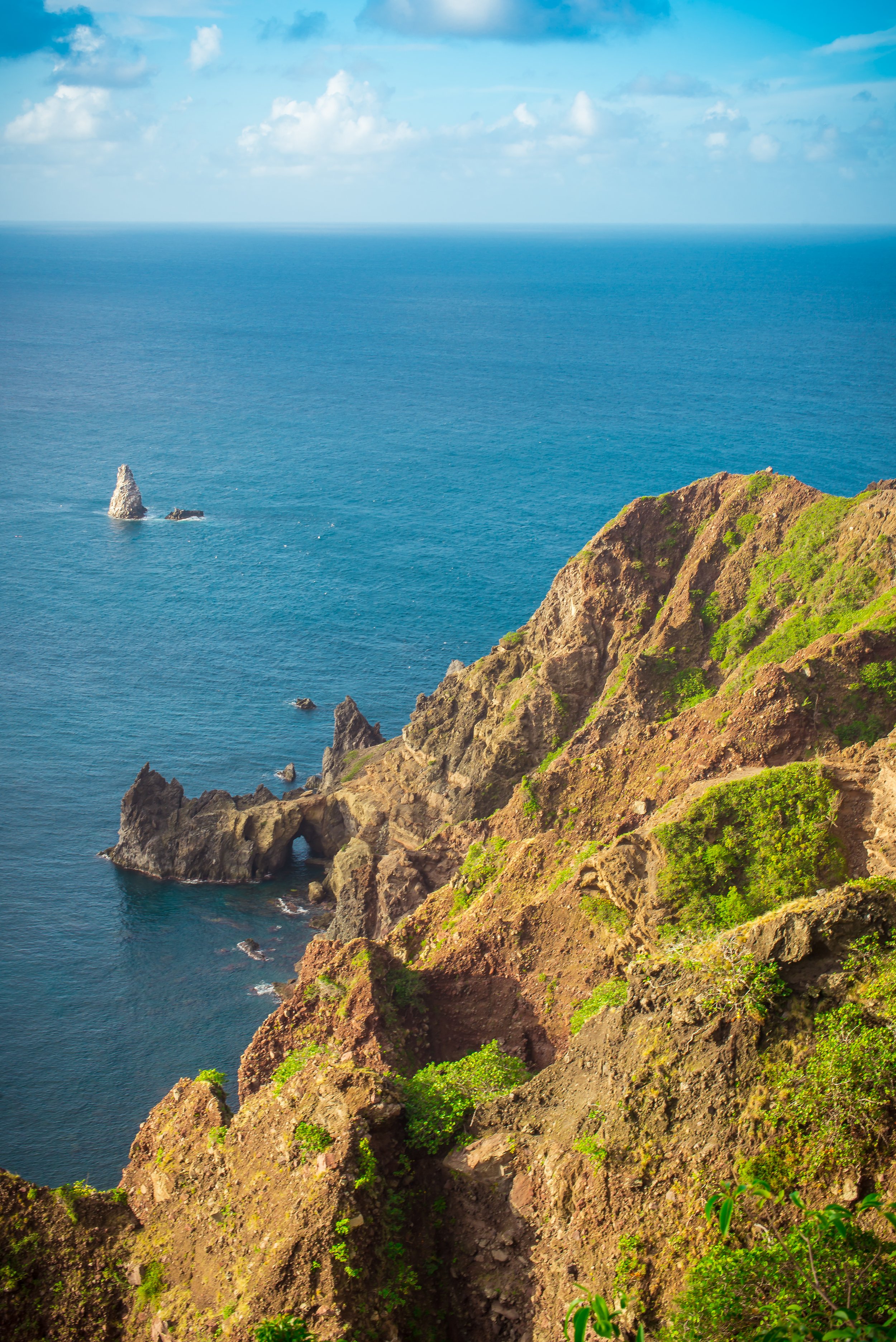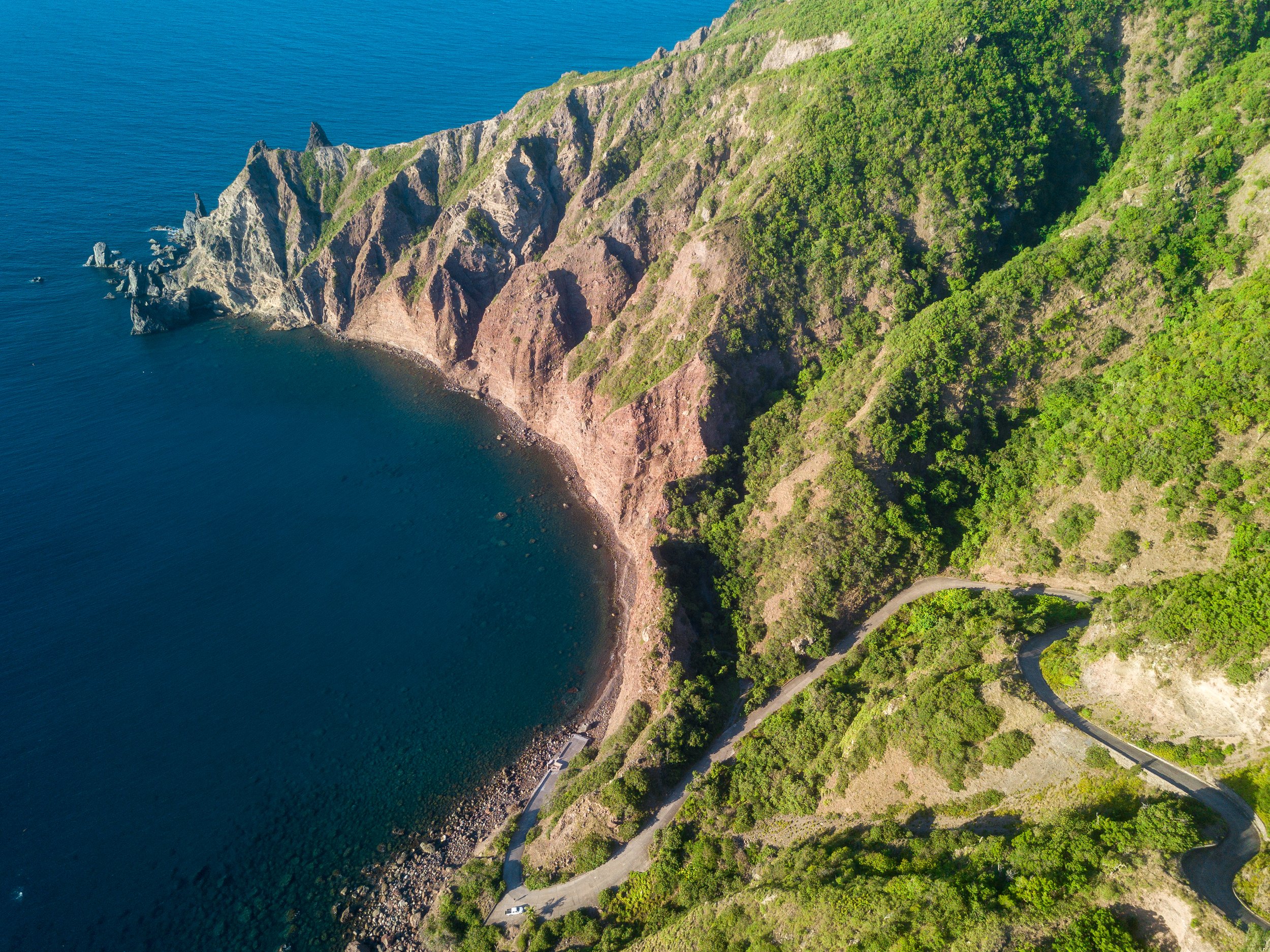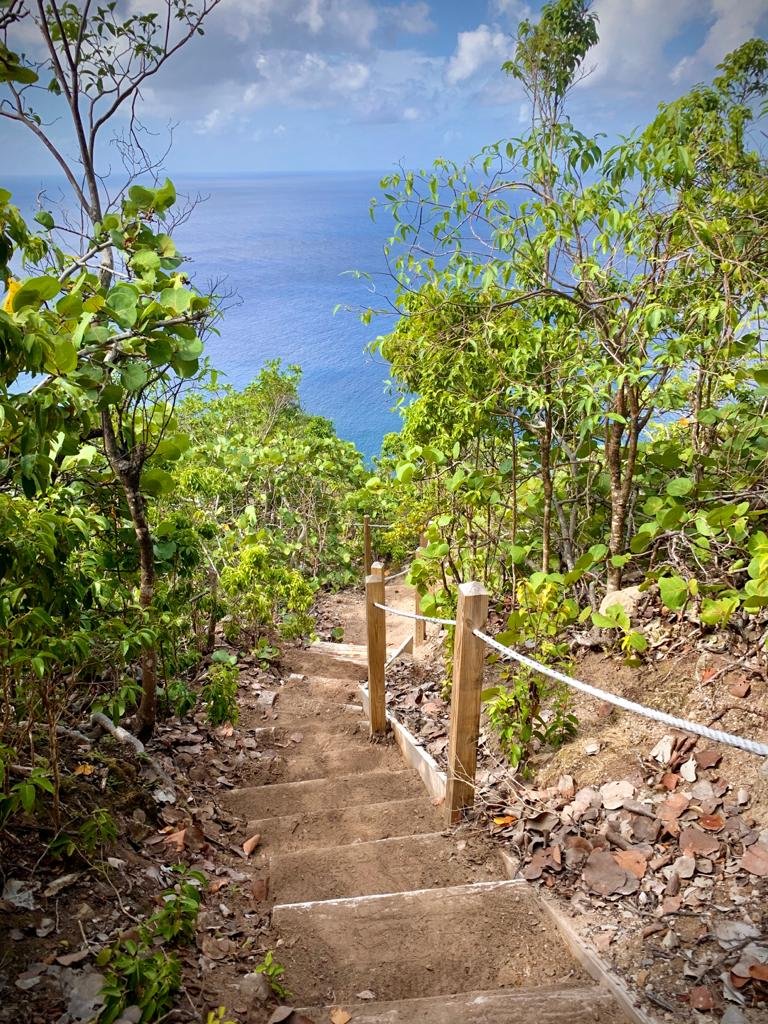Hikes & Trails
Mary’s Point
Jumplinks:
About this trail
Founded by European settlers in the early 1600s (with some real pirates of the Caribbean involved), Mary’s Point was once the most isolated village on Saba. Thanks to recent trail renovations done by the Saba Conservation Foundation, you can now get a fresh, beautiful look at one of the island’s oldest view. Great for history buffs and nature-lovers alike, this trail takes you on a path similar to the one that residents of Mary’s Point once took to get to more populous regions of the island.
Due to extensive erosion of the site, the village’s original residents were relocated in the 1930s to a part of Windwardside called the Promised Land. Today, you can explore some of the remaining ruins, as well as a notable Amerindian site called Hollow Rock. The Amerindians are thought to have first arrived on Saba nearly 4,000 years ago, in 1875 BC. Due to the important cultural and archaeological value of this area (which is also sometimes referred to as Palmetto Point), please be respectful of the ruins and of any grave sites you may come across.
If you’re feeling ambitious, Torrens Point is another lookout that can be hiked as a small extension of Mary's, but be sure to exercise extra caution as it’s known to be a little rougher. This addition is 0.4 km/0.24 miles, and takes about 20 minutes one-way.
Header image by Kai Wulf.
Difficulty:
Strenuous
Distance:
0.75 km/0.47 miles
1 hour one-way
Hiking resources:
On-island? Stop by Saba’s Trail Shop (run by the Saba Conservation Foundation) for detailed trail maps, info on guided hikes, and more. Plus, support trail-maintenance with a $3 donation, and you’ll receive a Saba trail badge! Not on Saba yet? Explore the SCF’s online map here.
Directions to trailhead
From Well’s Bay, travel through the Well’s Bay Gut/ravine. Turn left when you reach the sign. Don’t continue past the ruins. The trail is marked with reflectors.
Trail Highlights

Saba's not short on beautiful views, and Mary's Point is known to deliver. Image by Kai Wulf.

Another unmistakably Saban view. Image by Kai Wulf.

A good spot to imagine what life here might have been like in the 1600s. Image by Kai Wulf.

SCF's care for Saba's trails is evident throughout the hike. Image by Kai Wulf.

Ruins of an early home. Image by Kai Wulf.

Another view of SCF's recent improvements to the beloved trail. Image by Kai Wulf.
Ask a Local
Question: What’s special about the houses and architecture on Saba?
Answer: Hurricane after hurricane, these old houses are still here. Those modern block buildings that were built elsewhere, they get knocked over. But these old houses survive, and archaeology has shown us that when you look at the construction techniques of these old houses, they use peg construction instead of nail construction in many of them. When you have a peg that sticks two beams together, it gives with the wind, it will be a bit flexible. And that simple technology is proof of sustainable architecture on this island.
Jay Haviser
Archaeologist, heritage-research advocate
Related content
Saba Conservation Foundation
Organization
Saba Heritage Center
Organization




